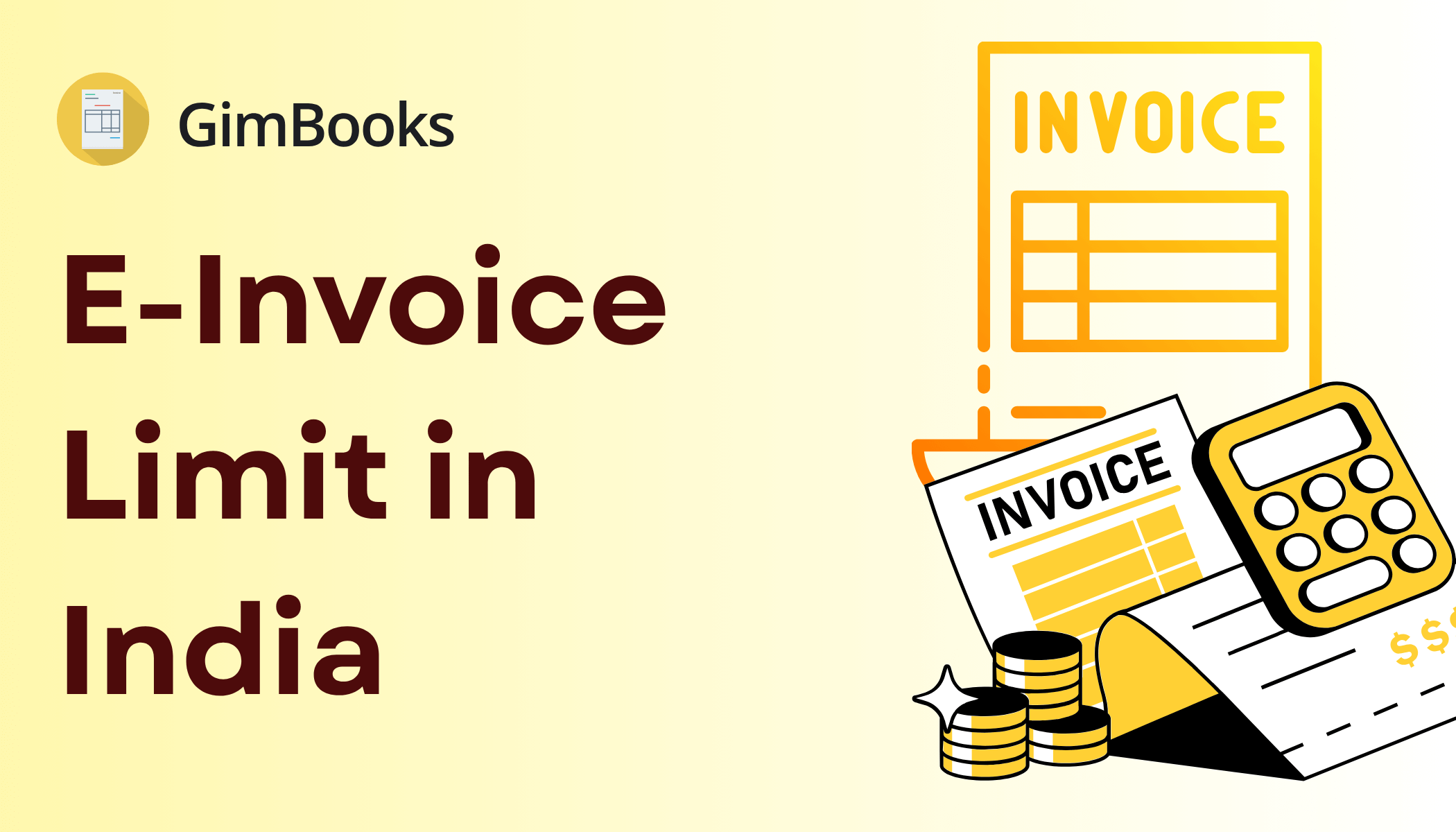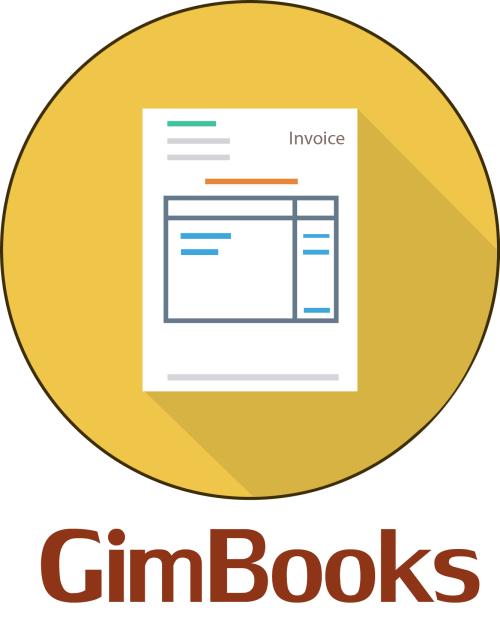E-Invoice Limit in India: Updated Guide for Businesses

E invoice limit in India has become a crucial topic for all businesses, especially small and micro-sized enterprises trying to stay GST-compliant. With new rules and updates from the government, understanding the e-invoicing limit, its turnover threshold, and applicability is more important than ever.
In this guide, we’ll walk you through the latest e-invoice limit in GST, the current e-invoice applicability limit, how to generate e e-invoice, and how platforms like GimBooks can simplify the process for your business.
What is E-Invoicing?
Let’s start with the basics.
E-invoicing, or electronic invoicing, is a system where invoices are generated digitally and reported to the government through the GST portal. These invoices are validated and assigned an Invoice Reference Number (IRN) by the Invoice Registration Portal (IRP).
Once validated, the invoice is digitally signed and returned with a QR code. It ensures accuracy, reduces fraud, and streamlines tax filing.
E-Invoice Limit in GST: What’s the Turnover Threshold?
As per the latest notification by the GST Council, the e-invoice limit has been reduced over time to cover more businesses. Here's how the applicability has evolved:
Current E Invoicing Turnover Limit (2024 Update)
What is the E-Invoice Applicability Limit Now?
As of now, any business with an aggregate turnover of ₹5 crore or more in any financial year since FY 2017-18 must generate e-invoices. It is called the e-invoice applicability limit.
So if your business crossed ₹5 crore in turnover even once in the past few years, e-invoicing is mandatory for you now.
Why is E-Invoicing Important?
E-invoicing helps make business processes smoother and more transparent. Here’s why it matters:
- Reduces errors in invoices.
- Simplifies GST returns filing.
- Improves cash flow by avoiding mismatches.
- Stops fake invoices and tax evasion.
- Boosts digital record-keeping.
Is E-Invoicing Mandatory for Small Businesses?
If your annual turnover is below ₹5 crore, e-invoicing is not yet mandatory. However, it’s good to be prepared as the government may reduce the threshold further in the future.
Even if you are not required to generate e-invoices, using digital invoicing can help keep your records in order and avoid last-minute compliance problems.
Suggested read - Top 10 Online Invoicing Software in India (2025)
E Invoice Time Limit: When Should It Be Generated?
Timing is important when it comes to e-invoices. According to GST rules:
- E-invoices must be generated before issuing the final tax invoice to the customer.
- If goods are being shipped, the e-invoice should be created before dispatch.
- Missing the e-invoice time limit could lead to penalties, and the invoice could be treated as invalid.
So it’s better to issue e-invoices in real-time or as soon as possible after a sale.
How to Generate an E-Invoice? A Simple Process
Generating e-invoices is simpler than it sounds. Here's a step-by-step breakdown:
1. Use GST-Compliant Software (like GimBooks)
The easiest way is to use software that is connected to the government’s e-invoice portal.
2. Create the Invoice
Add all necessary details like the buyer’s GSTIN, item name, HSN code, tax rates, and total value.
3. Submit Invoice to IRP
The software will send the invoice to the Invoice Registration Portal (IRP).
4. Receive IRN and QR Code
The IRP validates the invoice, assigns an IRN, and sends it back with a QR code.
5. Share with Buyer
Print or send the final invoice with the QR code and IRN to your customer.
How GimBooks Helps with E-Invoicing
If you're running a small or micro-sized business, GimBooks can be your all-in-one solution for e-invoicing and GST compliance.
Here’s how GimBooks makes it easy:
- Mobile-first, cloud-based invoicing: Generate e-invoices on the go. No need for desktops.
- Built-in GST compliance: Auto-fills GST details and checks errors.
- Easy integration with GST portals: Generate and manage e-invoices directly from the app.
- Real-time tracking: Get alerts, status updates, and reminders so you don’t miss deadlines.
- Simple UI for non-tech users: Anyone can use it no accounting background is needed.
GimBooks was made for businesses like yours, helping you focus on growth while staying compliant with evolving GST rules.
Benefits of Using E-Invoicing Software like GimBooks
Why should you use e-invoicing software? Here are the biggest advantages:
- Fewer human errors in invoices.
- Faster invoice processing.
- Auto-match with GSTR-1 and GSTR-2A.
- Better audit readiness.
- Access invoices anytime from a mobile.
With the e-invoice limit latest notification lowering the threshold to ₹5 crore, it’s smart to start using compliant tools now.
Learn - How to Cancel E-Way Bill Before and After Expiry
Who Is Exempt from E-Invoicing?
Certain businesses are still exempt from e-invoicing, even if their turnover is above ₹5 crore. These include:
- Special Economic Zones (SEZ) Units.
- Insurance and banking companies.
- Goods Transport Agencies (GTA).
- Passenger transportation services.
- Cinema ticket sellers.
However, most regular businesses need to comply if they cross the e-invoicing turnover limit.
Mistakes to Avoid in E-Invoicing
Avoid these common errors that can lead to penalties:
- Not generating the e-invoice before delivery.
- Missing required invoice fields.
- Using non-compliant software.
- Sharing invoices without IRN or QR code.
Stay ahead by using tools like GimBooks to reduce manual steps and prevent mistakes.
Related read - How to Cancel E-Invoice Quickly on the GST Portal
Wrapping Up: Prepare for the Future of Invoicing
The e-invoice limit in India has changed rapidly in the last few years. If your turnover is ₹5 crore or more, it’s time to move to a compliant e-invoicing system without delay.
Even if you are below the threshold, getting ready now can save you from future headaches.
With an easy-to-use platform like GimBooks, you can handle everything from generating GST-compliant e-invoices to filing returns right from your mobile phone. Stay ahead of compliance, reduce your paperwork, and focus on growing your business.
Also read - Top 7 Challenges in E-Way Bill Generation and How to Overcome Them
Frequently Asked Questions (FAQs)
What is the current e-invoice limit in India?
As of August 1, 2023, businesses with a turnover of ₹5 crore or more are required to generate e-invoices.
Is e-invoicing mandatory for turnover below ₹5 crore?
No, but it may become mandatory in the future. It's good to prepare in advance.
How can I generate an e-invoice easily?
Use GST-compliant software like GimBooks to generate, track, and share e-invoices in minutes.
Is an e-invoice mandatory for ₹5 crore?
Yes, e-invoicing is mandatory for businesses with a turnover exceeding ₹5 crore as per GST rules effective from August 1, 2023. This applies to B2B transactions to ensure compliance and proper tax reporting.
What is the new 30-day e-invoice rule?
Businesses must report invoices to the Invoice Registration Portal (IRP) within 30 days of the invoice date. This rule ensures timely submission and validation of invoices under GST.
What is the 7-day time limit for an e-invoice?
There is no official 7-day time limit currently. The existing requirement is to report the invoice within 30 days from its issue date.
What is the e-invoice limit for 2025?
In 2025, the e-invoicing mandate continues for businesses with a turnover above ₹5 crore. It helps streamline GST compliance and invoice authentication.
What is the e invoice applicability date in India?
The e invoice applicability date in India depends on your business's turnover. As per the latest GST notification, businesses with turnover above ₹5 crore must comply with e-invoicing requirements starting August 1, 2023.
What is the e invoice cancellation limit under GST?
The e invoice cancellation limit under GST is 24 hours from the time of invoice generation. After this window, the e-invoice cannot be cancelled on the IRP portal and must be adjusted through a credit note.
What is the e invoice generation time limit under GST?
The e invoice generation time limit under GST is 24 hours from the time of supply. Businesses must generate and upload the e-invoice to the IRP within this timeframe to ensure compliance.
What is the e-invoicing GST turnover limit India 2025?
The e-invoicing GST turnover limit India 2025 requires businesses with an Annual Aggregate Turnover (AATO) of ₹10 crore or more to comply with mandatory e-invoicing. This means such businesses must generate and report e-invoices within the prescribed timelines to remain GST-compliant.
